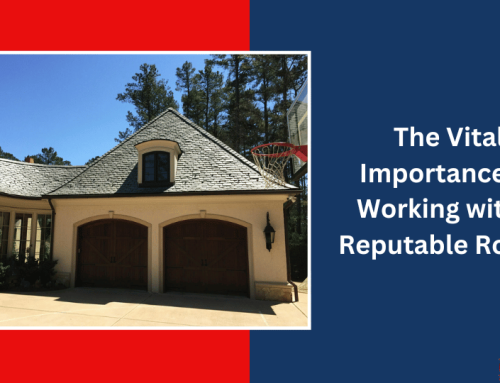Camden Roofing & Construction has provided you with an article on identifying issues with roof sheathing. Your roof is one of the most critical parts of your home. Surely, you remind how it protected your home and family during the harsh winter or the scorching summer.
You may think your shingles (or whatever your roofing material is) are responsible for your home protection. But what many people do not realize is that the sheathing is just as important as the shingles.

But, What Is Sheathing?
The sheathing is the material that covers the rafters of your roof. Typically, it is made of plywood or oriented strand board (OSB). Besides, it serves several critical functions.
Does your roof sheathing is damaged? Then, the shingles or panels on top of it are likely damaged as well. An expert roofer may determine what is wrong and suggest ways to fix it. If you need to replace your roof, have the roofer inspect the decking.
Removing the shingles often reveals damaged sheathing underneath. Usually, it is unnecessary to replace the entire sheathing. Though, some damaged boards may require replacement.
The following are some telltale indications that roof sheathing replacement is necessary:
- Damaged decking: Damage, such as a falling tree limb, can shatter the sheathing and cause the decking to break. You may detect that your roof is sagging. The attic might have some sawdust or splintered decking.
- Water damage: Leaks cause water damage. You may recognize it by spotting water stains on your ceiling, walls, or flooring. It might be a plumbing issue. But it could also mean that your sheathing needs to replacement. You can identify water damage in your roof by spotting dark stains and decay in the attic.
- Rot: Detect rot sheathing by shining it with a flashlight from the attic. Rotted areas will have a dark, stained appearance. Also, you may check for leaks in the roof by feeling for soft places in the underside of the sheathing, if you can reach it.
- You can see light: Can you see bright spots in the attic ceiling? If light can get through those tiny holes, the water will do it too!
- Sagging: The underlayment of your roof is to fault if you see drooping areas in your ceiling or if your shingles have lost their shape.
Tips for Taking Care of Your Roof’s Decking
By adhering to these guidelines, you may avoid the majority of roof sheathing issues:
- Ensure your roof has enough insulation to prevent ice jams and moisture buildup.
- You may avoid moisture buildup on the roof sheathing by ensuring proper ventilation. Therefore, the roof’s underlayment may get weakened.
- Fix issues promptly: Do not wait for them to balloon into headaches. Besides, sheathing deterioration may cause problems in other areas of the house, such as moist drywall and mold.
- Clean your roof: Regularly clearing the roof of organic garbage and growth is wise. Clearing out the gutters will allow water to flow more freely. The accumulation of moss and algae can deteriorate anything they are growing on. To avoid this growth, clean your roof following the instructions of your roofing material manufacturer.
- You should not install your roof directly over an existing roof. Take off the roof shingles or covering entirely. This measure allows you to inspect the sheathing’s underlayment and determine if it needs replacement.
As the top roofing company in Charlotte and Raleigh, North Carolina, Camden Roofing & Construction can evaluate your sheathing and suggest quality decking for your roof. Request a free estimate today!
For more information, contact Camden Roofing & Construction, LLC in Charlotte and Raleigh, NC, at 919-729-5050.
